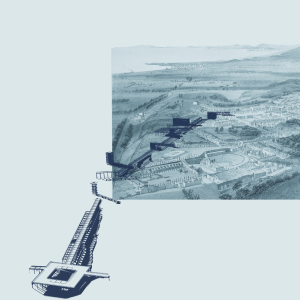The archaeological city as lesson of order in the disorderly condition of the contemporary city
Pompeii case study
DOI:
https://doi.org/10.35305/23626097v11i20.465Keywords:
Pompeii, heritage, Archaeology, urban design, architectural designAbstract
The text deals with the archaeological city of Pompeii that is included in the UNESCO World Heritage List; in 2023, it reached 4 million visitors. The ancient city is studied because of its formal rather than documentary qualities, which highlight a close relationship between the form of the house, the form of the insula and the general form of the city. As part of a recent urbanization, Pompeii raises some problems of use not only due to its fragility but also the inadequate accessibility system. In recent decades, important projects have been focused on the southern edge of the archaeological enclosure; they have been carried out by Renzo Piano and Peter Eisenman among others. They are related to the hypothesis grounded on the increasing of flows through the infrastructure strengthening that links Pompeii to Naples and from here to many other locations. A more recent hypothesis, however, developed by the authors during an international workshop, attempts to restore an essentially architectural dignity to the southern access system as well as to work on the area in-between the ancient and the contemporary city to ensure better services for tourists and return some public spaces to the inhabitants.
Downloads
Metrics
References
Benjamin W. y Lacis, A. (1925, agosto 19). Nápoles, Frankfurter Zeitung.
Coppolino F., Di Chiara E. y Visconti F. (Eds.) (2024). BIP POMPEII. Architecture for Archaeology. Projects for the South boundary between ancient and contemporary city. Nápoles, Italia: Clean Edizioni.
Eco U., Piano R. y Graziani A. (1989). Le isole del tesoro. Milán: Electa Mondadori.
Johnston, B. (2023, julio 6) Overcrowded, overpriced and badly managed: Why I’m done with Italy. The Sydney Morning Herald. Recuperado de: https://www.smh.com.au/traveller/reviews-and-advice/overcrowded-overpriced-and-badly-managed-why-i-m-done-with-italy-20230705-p5dlz9.html
Mangone, F. (2016). Immaginazione e presenza dell’antico. Pompei e l’architettura di età contemporanea. Nápoles, Italia: artstudiopaparo.
Picone, R. (Ed.) (2014). Pompei accessibile. Per una fruizione ampliata del sito archeologico. Roma, Italia: L’Erma di Bretschneider.
Ricci, A. (2006). Attorno alla nuda pietra. Archeologia e città tra identità e progetto. Roma, Italia: Donzelli.
Rossi, A. (1966). L’architettura della città. Padua: Marsilio.
Schröder, U. (2015). Pardié. Konzept für eine Stadt nach dem Zeitregime der Moderne a Concept for a City after the Time Regime of Modernity. Colonia, Alemania: Verlag der Buchhandlung Walther König.
Schröder, U. (2015b). I due elementi della edificazione dello spazio. Scritti scelti. Florencia, Italia: Aión Edizioni
Schröder, U. (2020). Il Quarto Spazio. Scritti Scelti. Florencia: Aión Edizioni.
Spina, G. (2020). Il segreto del tuffatore. Vita e morte nell’antica Paestum. Nápoles: Liguori editore.
Visconti, F. (2017). Pompeji. Moderne Stadt | Città Moderna. Tübingen-Berlin: Wasmuth Verlag.
Visconti, F. (2023b). Gli spazi della città - la città degli spazi. En U. Schröder. Pardié. Idea per una città dopo il regime temporale del Moderno, curado por Nicola Carofiglio y Matthias Storch (pp. 9-14). Florencia, Italia: Aión Edizioni.

Downloads
Published
How to Cite
Issue
Section
License
Copyright (c) 2024 A&P Continuidad

This work is licensed under a Creative Commons Attribution-NonCommercial-ShareAlike 4.0 International License.
Open access policy
A&P Continuidad is a non-profit and open access publication. According to Mexico Declaration on Cultural Policies, the journal distribution is submitted to Creative Commons Attribution-Noncommercial-ShareAlike 4.0 International Public License (CC BY-NC-SA). “Neither the commercial use of the original work nor that of the possible derivative works are allowed. The distribution of derivative works should be submitted to the license regulating the original work. This license is not free.”
A&P Continuidad authorizes the partial or full reproduction of texts and graphs provided that the source is cited. Authors are exclusively responsible for the criteria expressed in the articles which do not necessarily reflect the opinion of the Editorial Committee or that of the Direction Board. The copyright of the published articles pertains to their authors or publishers.
Transfer of rights
The acceptance of an article to be published implies the author’s transfer of rights to the journal. Authors continue to have the right to use the material in future books or publications, approve or veto the republication of their works as well as the rights related to patents or other rights. Transfer of rights form may be downloaded here.























 This OJS site and its metadata are under a
This OJS site and its metadata are under a 

